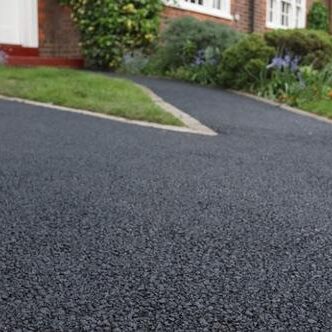Asphalt holds a special place in the world of paving, being a longtime favorite among both business and homeowners — not to mention paving contractors themselves. A lot of this popularity stems from the durability and good looks of asphalt. Yet those qualities won’t last as long as they should unless you maintain your asphalt surface correctly.
Hiring a contractor to apply a layer of seal coat every couple of years represents the most important thing you can do to maximize the lifespan of your asphalt. If you would like to learn more about seal coat, as well as what it can do for your asphalt, read on. This article will outline everything you need to know about this valuable treatment method.
Seal Coat Benefits
Seal coat provides a vital function: enabling an asphalt surface to better withstand the ravages of age, time, and exposure to the elements. Such factors will lead to issues like cracks, potholes, and raveling if asphalt is unprotected for too long. Seal coat acts to rejuvenate the asphalt’s natural resistance to such destructive forces.
For one thing, it boosts the pavement’s waterproof qualities, making it more difficult for moisture to penetrate and cause problems. Seal coat also increases the asphalt’s resistance to the damaging effects of ultraviolet rays. In the process, seal coat also manages to restore that jet-black look that made asphalt such an appealing choice in the first place.
If nothing else, the numbers around seal coating should convince you about how important it is. Applying seal coat at recommended intervals will allow your asphalt to remain viable for up to 30 years. Those who fail to recognize the importance of seal coat may find themselves having to replace their asphalt pavement within as little as ten years.
Seal Coat Composition
So what is seal coat made of, anyway? Not too surprisingly, the number one ingredient seal coat is asphalt itself. In this case, however, the asphalt has been emulsified — that is, dissolved in water with the help of soap-like substances — in order to make it thin enough to be applied with a spray wand. Seal coat may also contain a variety of secondary substances designed to improve its protective qualities.
Seal Coat Timing
Those who want to get the most from their asphalt should plan to have a seal coat applied every other year. Anything more than this may actually end up leading to problems for your asphalt, as an excessive layer of seal coat may begin to crack and peel, leaving your asphalt under-protected.
Likewise, don’t apply a seal coat to brand-new asphalt, as it may affect the ability of the asphalt to cure properly. The result will be pavement that is much softer than it should be, making it more prone to rutting and other pressure-related problems. Always wait at least three months before applying your first coat of seal coat.
Seal Coat Experts
Don’t be tempted into trying to apply seal coat yourself. The process can be messy and much more difficult than you might realize. Seal coat also represents a potentially hazardous substance — one that should only be handled by trained professionals with the requisite tools and experience to do the job correctly.
You can help, however, by sweeping and rinsing your asphalt clean in the days leading up to the scheduled application. This will help to ensure a proper bond forms between the seal coat and your asphalt. For more information about what it takes to get the most from your asphalt pavement, please don’t hesitate to contact the seal coat experts at Arrow Black Top & Masonry Inc.


